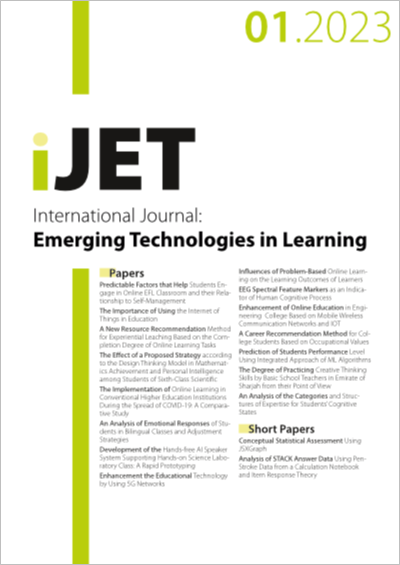Development of the Hands-free AI Speaker System Supporting Hands-on Science Laboratory Class
A Rapid Prototyping
DOI:
https://doi.org/10.3991/ijet.v18i01.34843Keywords:
AI in education (AIEd), hands-free AI speaker, hands-on science laboratory class, rapid prototyping, natural language processing (NLP)Abstract
The recent progress of natural language processing (NLP), speech recognition, and speech generation envisions using hands-free artificial intelligence (AI) speakers in classrooms to support student learning. In science education, the conventional hands-on laboratory education has been considered crucial in fostering students’ manipulative experimentation skills. However, touching things with gloved hands other than experimental equipment and apparatuses is strictly restricted because of the safety issue, which calls for another channel to get timely support. Therefore, we ideated that adopting hands-free AI speakers in the hands-on science laboratory classroom would support student learning. Using the rapid prototyping method, we designed and developed an AI speaker-based system that answers student queries concerning solution-making, experimental process, and waste liquid disposal, which corresponds to the initial, middle, and final phases of a laboratory class. The system was internally validated by usability tests of 9 expert panels and 18 university students, and then revised. The revised system was externally validated in an analytical chemistry experiment class for 3 sessions with 13 university students. We present the result of the prototype development, internal and external validations with quantitative and qualitative data. The AI speaker system enabled students to use the auditory learning mode in the laboratory while concentrating on the experimentation with their hands in the external validation.
Downloads
Published
How to Cite
Issue
Section
License
Copyright (c) 2022 Gyeong-Geon Lee, Minji Choi, Taesoo An, Seonyeong Mun, Hun-Gi Hong

This work is licensed under a Creative Commons Attribution 4.0 International License.



